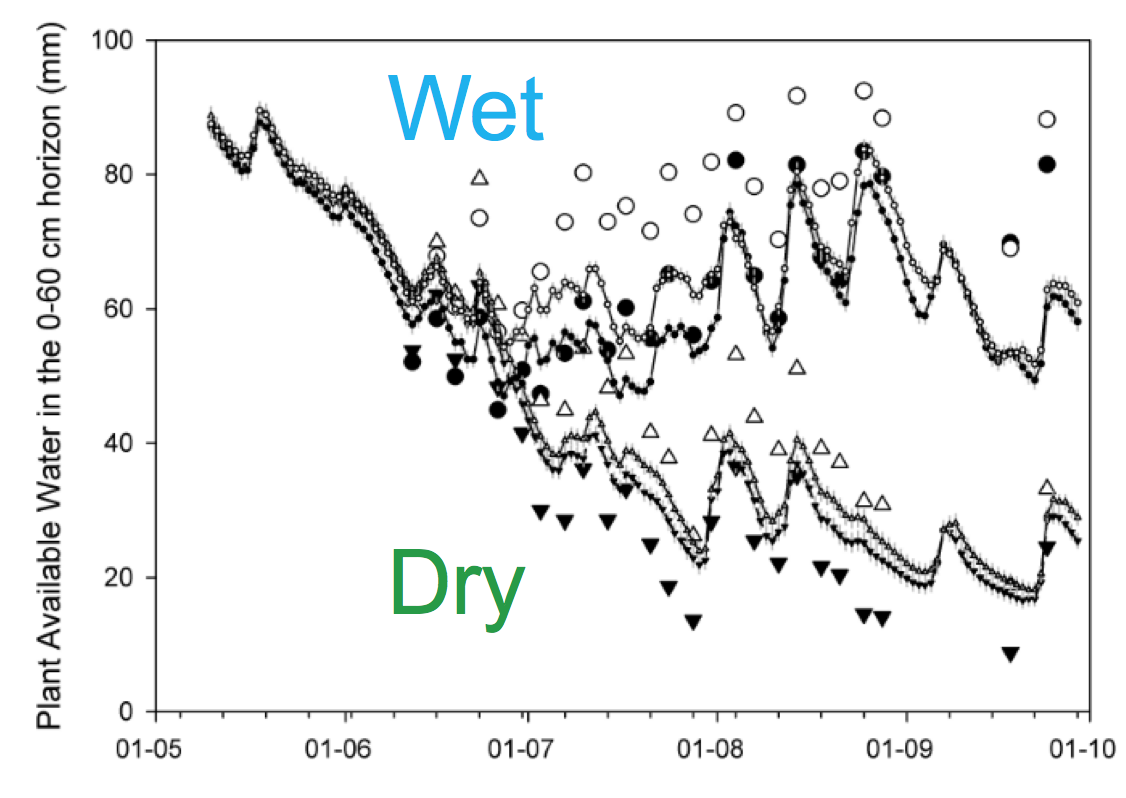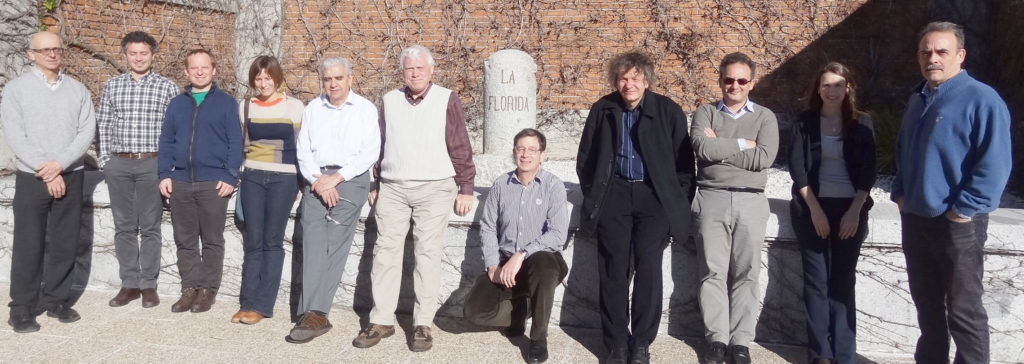Maize
Main Contents for Initiative
Jean-Louis Durand and Ken Boote
Brief Description of Activity
AgMIP-maize aims to improve and apply crop models in climate change impact and adaptation assessments by bringing together crop modelers, experimentalists, breeders, working withfield measurements and future scenarios.
Overview of Participants (about 40)

Measurements and multi-model simulations of fraction of soil water content under AMBIENT and FACE [CO2]. Large discrepancies between models. Underestimate of CO2 impact.
Recent Noteworthy Finding
Recent Papers/Reports
Zhao et al. 2017 PNAS; Durand et al 2017 EJA;
Prior Updates

Main Contacts for Initiative
The maize team is led by Simona Bassu, Jean-Louis Durand, Jon Lizaso, and Ken Boote.
Motivation
Collaborating scientists representing 19 maize models intercompared their models for response to CO2, temperature, and other factors at four sentinel sites representing variation in maize productivity. Their work is aimed at answering questions such as: Do different maize models give similar responses to climatic factors? Does an ensemble of the models give more reliable prediction of response to climate than individual models? Does model calibration or high level of input information affect the response to factors? The AgMIP-Maize team plans to next intercompare maize models against elevated CO2 response data measured in Free Air CO2 Enhancement sites in USA and Germany.
An important conclusion of the first successful exercise of intermodel comparison for simulating the impacts of CO2 and temperature changes on maize yields and water use under well watered conditions was a very high uncertainty concerning the CO2 effects, varying between zero and 30% yield increase under doubled (540 ppm) atmospheric CO2 concentration. The parameterization of the different models for simulating CO2 impacts needed to be tested against real data. As a C4 plant, the maize crop growth and yield is not expected to respond as much as wheat or rice. Most models take CO2 into account through the response of water use and its impacts on yield. The CO2-induced reduction in stomatal conductance may bring about various changes in the plant growth making the prediction of CO2 response rather complex. Furthermore, maize trials run under Free-Air CO2 Enrichment (FACE) in natural conditions are rare. A two year maize experiment of maize cropping in the FACE facility maintained at the Thünen Institut (Braunschweig, Germany) and exhibiting variable responses to CO2 depending on year and water regime, was chosen to examine models. A common simulation protocol was followed by the modelling community. 21 models were compared in a simulation exercise (AGRO IBIS, APSIM, CERES, DAISY, ExpertN Ceres, ExpertN Spass, ExpertN Sucros, IXIM, LPJ mL, MAIZ SIM, MCWLA,, MONICA, PEGASUS, RZWQM2, SALUS, SARRA-H, Simplace Lintul5, Simplace FAO 56 and STICS). The AgMIP-Maize team met in Madrid in May 2015 to analyse the simulation data and organize a publication. The main conclusions were presented at the International Congress in Paris in July 2015 (Our Common Future under Climate Change) organized prior to the COP 21 conference. Final results were discussed at the iCROPM meeting in Berlin on 15-17 March 2016 and the annual Maize group meeting held in Berlin on 18 March.
